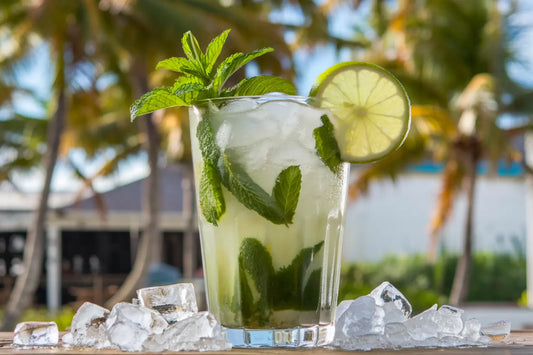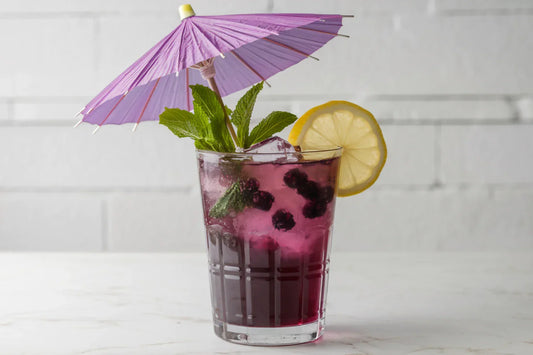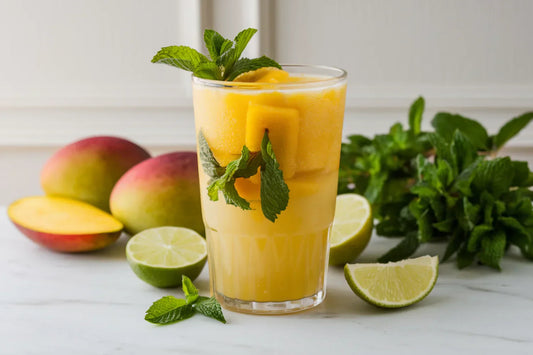What is a Cobbler Shaker? Everything You Need to Know
BarNeedIf you’re a cocktail enthusiast or just starting out in bartending, you might have heard of the cobbler shaker. Alongside the Boston shaker, it is one of the most classic tools in the cocktail-making world. Favored by beginners and home bartenders alike for its ease of use, it makes the mixing process smoother, whether you're crafting a refreshing mojito or a strong martini.
In this article, we’ll take a closer look at the definition, features, and styles of the cobbler shaker to help you understand it comprehensively.
Jump to:
- What is a Cobbler Shaker?
- History and Origins
- Styles and Materials
- How to Use a Cobbler Shaker
- Cleaning and Maintenance
What is a Cobbler Shaker?
The cobbler shaker, also known as a three-piece shaker, has a streamlined design that appears quite elegant. According to Wikipedia, it is defined as “a cocktail shaker with a built-in strainer and a cap.” This means it has the following features:
- Its lid includes a built-in strainer, allowing you to pour directly after mixing your drink, simplifying the straining process. This saves time and reduces hassle.
- The three-piece structure fits together naturally, providing an effective seal that doesn’t loosen during shaking. Additionally, it’s convenient to clean after disassembly.
- Compared to the Boston shaker, it has a smaller size and a more compact design, making it easy to shake, even allowing for one-handed use.
- Furthermore, most cobbler shaker caps have measuring functionality, capable of measuring 1 oz (30 ml) of liquid. You might not even need to use a jigger.
These advantages make it a versatile tool that allows you to easily mix drinks without additional equipment. So it’s an ideal choice for beginners and home bars that require simple setups.

History and Origins
Despite its elegance and ease of use leading to its popularity in Japan, even referred to as the 'Japanese shaker,' the cobbler shaker actually originated in the United States.
In the 19th century, as cocktail culture began to rise in the U.S., more people started experimenting with mixing drinks at home or in social settings, creating a growing demand for convenient bar tools. While traditional cocktail tools were highly functional, they could be complex for home users and beginners. Thus, the more user-friendly cobbler shaker was born. It was named 'cobbler' because it was widely used to mix the classic fruit cocktail called 'Cobbler' in its early days.
By the 20th century, with the spread of cocktail culture, the cobbler shaker made its way to countries like Japan. Japanese cocktail culture places a strong emphasis on precision and detail, and its built-in strainer and compact design align perfectly with the style of Japanese bartenders, making it a commonly used tool in the local bartending scene.
Today, while it may not be as favored by professional bartenders as the Boston shaker, the cobbler shaker remains widely popular around the globe, especially in home bartending and casual mixing environments.
Styles and Materials
The styles of cobbler shakers have become increasingly diverse over time.
In terms of capacity:
- 12 oz (350 ml): A smaller size, suitable for mixing single cocktails, often used for personal or small batch needs.
- 16 oz (470 ml): A medium size, ideal for mixing cocktails that serve one or two people.
- 24 oz (700 ml): A larger size, designed for making 2-3 cocktails, typically used in bars or at gatherings.
In terms of materials:
- Stainless Steel: The most common and mainstream material, widely used due to its corrosion resistance, easy cleaning, and durability. It's the choice for most professionals and home users.
- Glass and Metal: The main body is made of glass, allowing you to see the mixing process inside, while the top features a metal strainer lid and cap. The glass shaker often utilizes cutting techniques that create unique light and shadow effects and increase friction, making them less slippery when held. This design is both practical and aesthetically pleasing, and it also provides a weighty feel.
- Plastic: The plastic shaker typically features measurement markings, and its lightweight design makes it very user-friendly for beginners.
Additionally, there are various color options created through plating processes, such as gold, copper, and black, to meet users’ needs for different occasions and styles. This process forms a uniform and durable coating on the stainless steel surface, enhancing its durability and shine.
How to Use a Cobbler Shaker
Using it doesn’t require complex techniques; you can easily follow the steps below to quickly master its usage.
1. Gather your cocktail ingredients, such as spirits, juices, syrups, and more.
2. Use the shaker's cap to measure each ingredient to ensure proper proportions.
3. Add the ingredients into the main body along with a suitable amount of ice.
4. Assemble the lid, cap, and main body to prevent spills. However, be careful not to tighten them too much, as this may make it difficult to open later.
5. Hold the shaker and shake it for 10-15 seconds to thoroughly mix the ingredients.
6. Remove the cap and pour the drink into your prepared glass; the built-in strainer will automatically strain out ice and solid components.
It's important to note that using too much ice or shaking too vigorously may cause the shaker to become stuck and difficult to separate. In this case, you can either gently twist the lid or wipe it dry with a cloth before attempting to open it again.

Cleaning and Maintenance
Manual Cleaning: Typically, the stainless steel shaker can be disassembled and placed in the dishwasher for cleaning. However, to avoid damage to its parts from high temperatures and water pressure, which can affect its sealing capability, hand washing is recommended. This also helps maintain its like-new appearance.
Warm Water Cleaning: Warm water effectively removes stubborn stains and helps eliminate odors.
Disassemble for Cleaning: Take it apart for cleaning to ensure all parts are thoroughly cleaned.
Avoid Harsh Cleaning Tools: Tools like brushes or steel wool can scratch the surface, especially on gold- or copper-plated versions.
Wiping Dry After Washing: If not wiped dry, water spots will remain on the stainless steel surface, affecting its appearance.
Air Drying: If you don’t mind water spots, you can choose to air dry it by placing it in a well-ventilated, dry area to prevent bacterial growth.
Conclusion
The cobbler shaker, with its simple design and convenient use, has helped countless people easily get started with cocktail mixing. Whether you're a beginner enthusiast or a seasoned drink lover looking to mix drinks at home, it is your ideal choice. Especially during holiday gatherings or weekend cocktails, it not only provides convenience in mixing but also adds elegance and a sense of ritual to each drink.
For those who enjoy bartending, do you prefer the cobbler shaker, or would you choose the more professional Boston shaker? Feel free to leave a comment below to share your experiences and explore the joy of cocktail making with everyone!




